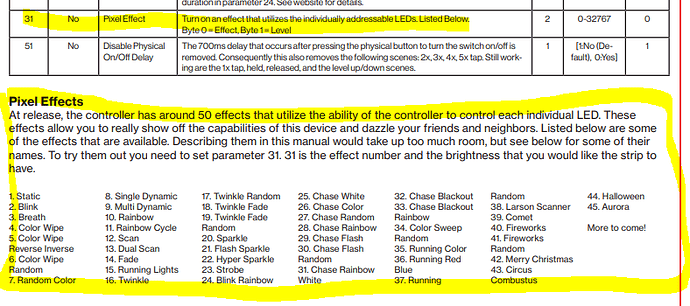I don’t have a light strip myself to compare, but I think you’d be able to do this at least one at a time (and then go through all 3) via rule machine by running custom actions and using the set config parameters option similar to what I was showing here -
And the main relevant information from the documentation is -
So I’d lean towards doing what I did in that link and going parameter 31, 10, 10 for example to get the rainbow effect (may have to play around with it if you can mess with it while watching it too). I’ll note from that thread that you’ll also want to do each of the 3 numbers on their own line, you can’t write “31, 10, 10” in the setConfigParameters, you’ve got to do “31” “10” “10” as separate values and it’ll organize it.
